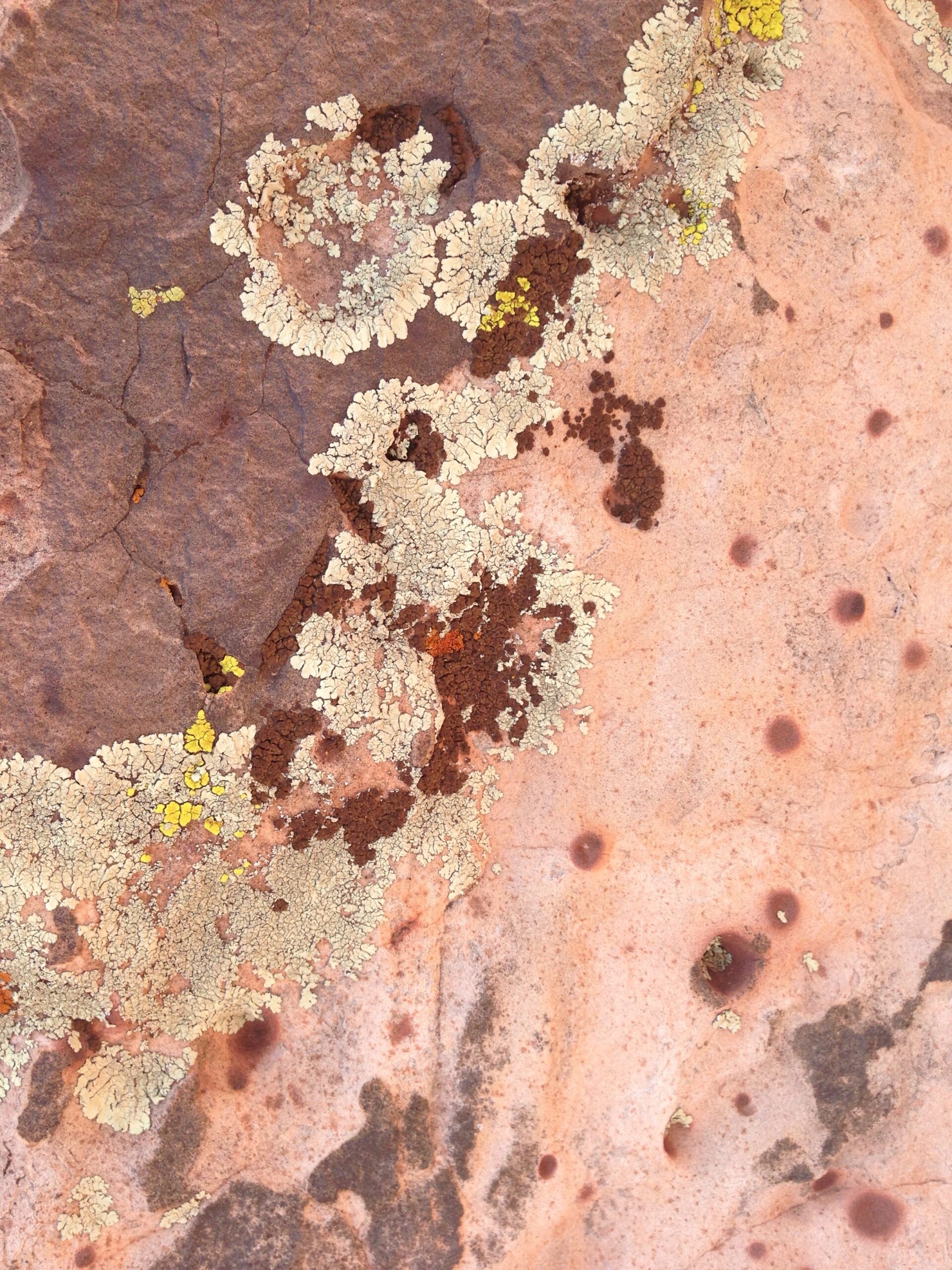
I have always been fascinated by the Mojave Desert — the hottest and driest desert in North America. I live on the edge of Las Vegas — the only major population center in the Mojave — and make it a point to get into the desert as often as possible. One of the special lifeforms that thrive in the desert southwest is lichen. Interestingly, lichen is a community of two or more distinct yet interdependent organisms — fungi, algae and occasionally bacteria. There are more than 20,000 different types of lichen, which have adapted to almost every ecosystem on the planet. Although these organisms are often overlooked, it is estimated that lichen cover approximately 7% of the earth’s surface. These complex communities produce a surprising array of colors and textures. When combined with the wide array of rock formations found in the Mojave, one is struck by the endless combination of these wild living compositions. Whoever considers this desert wilderness lifeless or lacking color has not spent enough time in it or examined it closely.
It is fascinating how these distinct organisms support and cooperate with one another to thrive in this harsh desert environment. New research is revealing how complex lichen is; however, the basics are these: The algae utilize photosynthesis to produce energy for the fungi. In return the fungi provide structure and protects the algae from the elements. The fungi can also pull nutrients from the rock and eventually break the rock down to form soil. The lichen absorbs water and nitrogen directly from the atmosphere and are therefore considered a reliable indicator of air quality. After a rain, the lichen’s excess nitrogen leaches into the surrounding soil fertilizing the nearby plants – contributing to a supportive ecosystem. Ultimately, when lichen die, they decay and develop small pockets of new nutrient dense soil. Although some types of lichen are poisonous, most can be consumed by other creatures. Some types have even been used to develop medicines and dyes. Seems that we have a lot to learn from the humble lichen.
